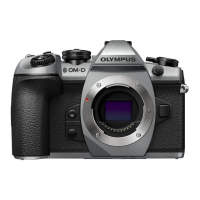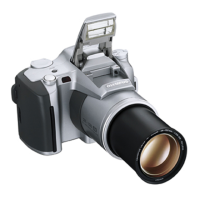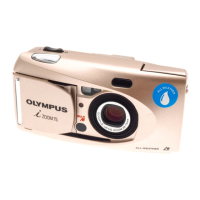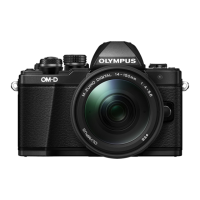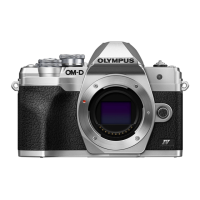Understanding i-- SPEED
38 i--SPEED
A similar effect is found when the frame speed is increased. The
available shutter time is reduced because the frame period is
reduced -- the faster the frames are taken, the less time is spent on
each one. As a result of this, increasing frame speed will normally
require the addition of extra light to the scene.
` Internal Memory, Circular buffer
When in record mode, the camera continuously stores frames in its
internal memory. That memory is configured in a circle so that,
once the memory is full, each new frame replaces the oldest stored
frame. In this way, the camera keeps a rolling history of the scene
it views and this process can continue indefinitely. This
configuration of the memory is called a “circular buffer”.
Once the desired event has occurred, the camera may be stopped
by pressing a menu button or raising a trigger event as discussed
below.
` Trigger
As mentioned above, the Olympus i--SPEED records video in a
circular buffer and can do so indefinitely. At some point, however, it
is necessary to stop the recording process in order to preserve the
data in the memory.
The method of stopping the camera is highly important as it is this
which guarantees the capture of the event in question. There are
two methods of stopping the Olympus i--SPEED .Thefirstisa
button press in the menu system and this immediately stops the
record process, so that the memory contains the history prior to the
button press.
The second method is to use an external electrical trigger, which
causes the camera to stop after a user--settable delay. By
permitting the camera to record for a brief time after the trigger,
some history before the trigger and also some future after the
trigger are preserved in the memory. In this way, the trigger may
occur in the middle of the event of interest and yet the camera can
still capture the whole event.
The delay between the trigger event and the cessation of recording
is controlled by a frame c ounter known as the trigger counter. The
length of this count is controlled by the menu system and is
expressed as a percentage of the total available record time of the
camera’s memory.
The counter value is described from the v iewpoint of the final
recorded video clip, so that a setting of 0% sets the counter to
delay for the entire length of the circular buffer. In this way, the

